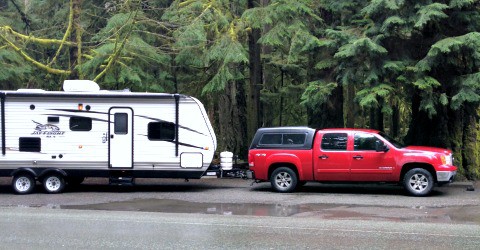10 Things To Bring When Exploring The National Parks
Planning on visiting a National Park soon and not sure what to pack?
Our family has recently explored several of America’s National Parks while on our 22 week RV road trip across the USA and into Western Canada. Once we had gone to several we realized that we had come up with a mental packing list of essentials we needed to explore the National Parks each day.
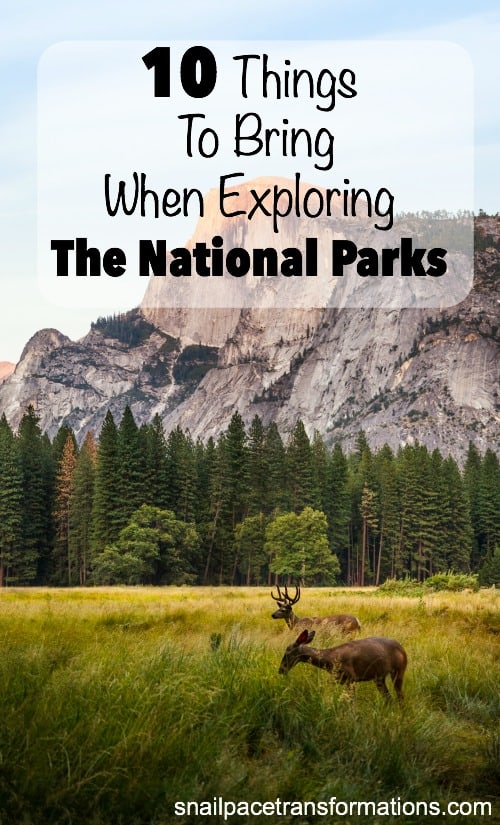
Below is our list of essential day exploring items, but first let me tell you about one essential you are going to want to buy if you plan to visit more than two National Parks this year–a National Parks pass. A National Parks pass is good for one year and currently costs $80. Considering most National Parks cost around $30 for entry, if you visit just three in a year you are starting to save money. By the time our trip is over our family will have visited at least a dozen National Parks, making our pass purchase a huge money saver.
10 Things To Bring When Exploring The National Parks
(Links in this post are affiliate links. I will be compensated when you make a purchase by clicking those links. See my disclosure page for more information)
1. A Map And A Plan
National parks are often very large in size and if you go into them without a plan you are going to waste precious time.
My husband and I spend a bit of time researching online what there is to see at each National Park before we arrive. We enter into Google “top 10 things to do at…” and usually a listing from the website TripAdvisor will come up and we are able to see pictures and reviews of top hikes and sights in the park.
We have found it very helpful to head first to the visitors center upon arrival at the park we are visiting and ask the rangers for suggestions. Generally they will give you a map and highlight features that best suit your group’s wants, such as length of hike or desire to see a certain geographical feature.
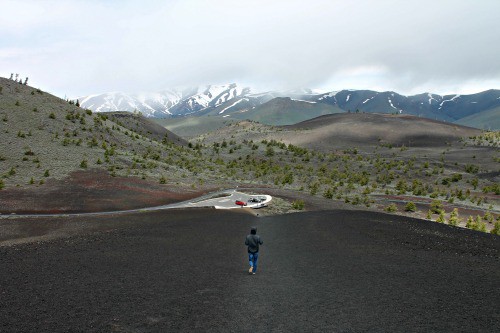
Craters Of The Moon National Monument
2. Good Hiking/Walking Shoes
Even if you just plan on doing the driving loop around a National Park, you are still going to do a lot of walking. Many of the best sites are not available right on the road, instead you have to walk a 1/2 mile or so to them. These paths are generally very user-friendly, but the walking does add up and if you are not wearing good footwear you are going to end up with tired and achy legs very quickly.
Our family didn’t invest in hiking shoes, although there are days that we wish we did. Instead knowing that we would be sticking to beginner/moderate hikes we purchased everyone in the family a good pair of walking shoes. My husband and daughter have Asics, I have Brooks, and my sons have Nike brand, These are not the “fashion” grade, lower cost footwear, but instead their higher grade walking/running shoes that come with more support.
Good socks are also another great investment. Ill fitting socks can cause blisters, our family likes the ones that hug the arches (like these ones) leaving less chance for a sock to bunch and create the perfect environment for a blister.
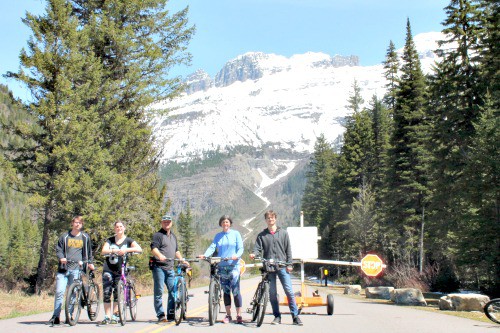
Glacier National Park
3. A Weather Appropriate Hat
On cold and windy days a winter hat that covers the ears (we have one in this brand and find it very warm) is such a blessing on short walks out to see the sites. On a hot and sunny day a good summer hat that shades the eyes can make it easier on your eyes and will help you avoid heat stroke (a simple ball cap will do, but if you want a bit more sun protection a hat like this is perfect).
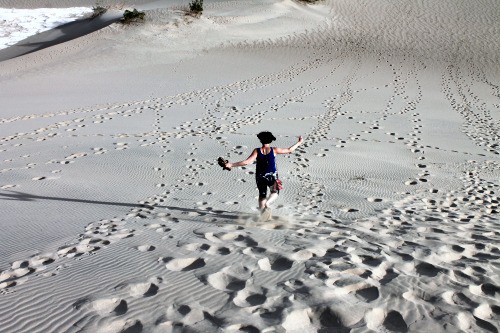
Death Valley
4. Sunglasses
Protect your eyes not just from the sun, but from snow and water glare with a pair of good quality sunglasses. Our family has several tifosi brand sunglasses and we find them to be good quality at a fair price.

The Grand Canyon, South Rim
5. Sunscreen
A sunburn after a day of exploring is a painful souvenir. Avoid it by applying sunscreen before you head out for the day and make sure to slip a small bottle of it in your backpack for reapplying. A chapstick with SPF is also a good idea.
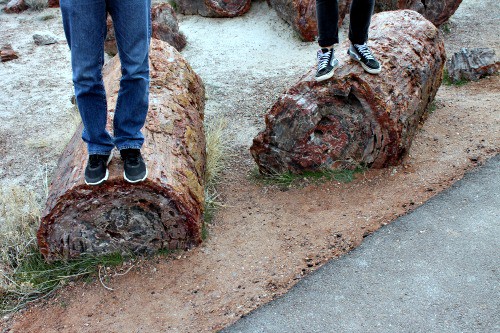
Petrified Forest
6. A Small Backpack
My husband and I both have small, sling style backpacks that have come in super handy for day hiking through the parks. This is the one my husband has (his is tan in color), and this is the one I have.
Packed in mine is our Canon digital SLR camera, my iPhone, my wallet, a few first aid items (more on that later), a water bottle, a snack bar for each of us and a travel sized container of wipes. I also like to slip in a hair elastic and/or a yoga headband so that I put my hair up if it is a windy day. The yoga headbands I buy can also cover my ears to keep them just a bit warmer if a cool breeze is blowing.
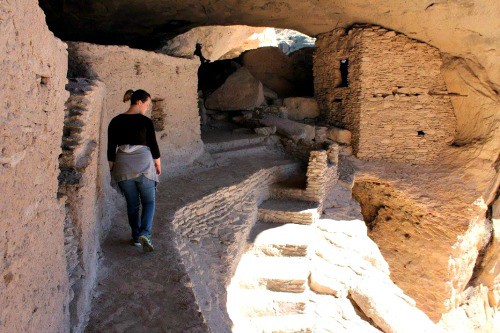
Gila Cliff Dwellings
7. A Good Camera Or Smartphone Camera Accessories
If you can afford it, I highly recommend investing in a good digital SLR camera and a zoom lens. Our family has a Canon Rebel and find it to be a great camera. Also make sure you bring along an extra camera card in case you either forgot yours in the laptop in your travel trailer (yep, I have done that several times) or in case you should fill your card before you finish exploring for the day (I have also done that).
If you can’t afford to invest in a digital SLR camera, you can still get really good pictures using your smartphone. I suggest investing in a selfie stick, but not primarily for selfies; the stick allows you to just a bit closer to what you are snapping a picture of much like a zoom lens does on a camera. You might also want to look into purchasing a set of zoom lenses for your smartphone. I have not tested these attachable smartphone lenses, but the reviews on them seem to say that they work fairly well.
Two other smartphone accessories to bring along are a car charger and a portable battery charger so that you never miss a shot because you smartphone died.
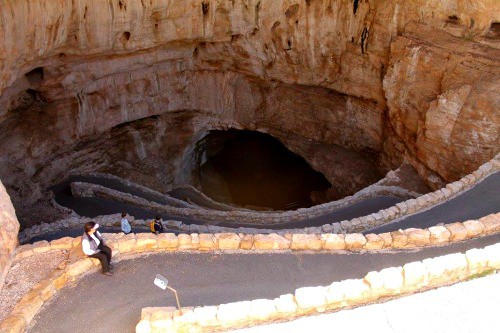
Carlsbad Caverns
8. A Small Cooler or Backpack Cooler
With five of us on our trip across North America we have both a small cooler and a backpack cooler. We keep the cooler in the truck packed with drinks for the day. This not only saves us money, but it also means we have something to drink even if we are miles from the National Park facilities offering food and drinks.
We use our backpack cooler to pack a lunch for the day. We really like it because it makes transporting our lunch to a great view so simple.
We have about half a dozen small freezer packs that we rotate between the coolers and the freezer so we are never without something to keep our drinks and food cool for the day.
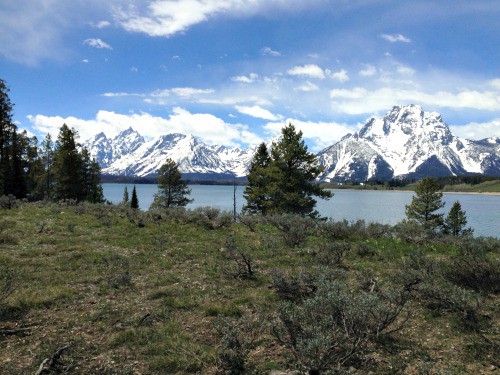
Grand Teton National Park
9. A Few First Aid Essentials
Blisters happen, bugs bite, brambles scratch and all can be taken care of quickly if you pack the right supplies.
In my day pack I keep a few band-aids for blister and scratches. I also keep after bite cream to quickly soothe a bee sting. In our vehicle we keep a larger first aid kit that includes numerous items–seriously, it is huge–but my husband is an RN so he likes to be prepared for anything. What we have used most out of this huge first aid kit is pain relievers, such as ibuprofen, and anti-nausea medications, such as Dramamine (roads can get really rough in some areas of National Parks).
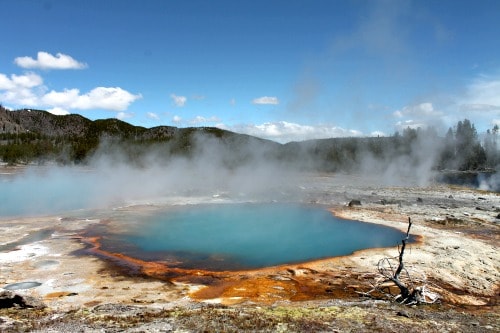
Yellowstone
10. Snacks
When exploring a National Park to its fullest, you tend to walk a lot! All that physical activity can make you a little more hungry than usual.
Our family is ready for hiking hunger with a gallon sized bag full of various granola bars and trail mix sleeves in the truck as well as one for everyone in my day pack.
Here is a list of our favorites
psst…all of these bars are included in Prime Pantry, one of many services available to Amazon Prime members. You can try Amazon Prime for free with their 30-Day Free Trial. I really enjoy the convenience of having essential; everyday items delivered right to my door at good prices.
A bonus item for wildlife and bird lovers
If you love watching wildlife and/or birds, make sure to pack a small pair of binoculars.
Experienced explores of National Parks, what would you add to my list?
See pictures of our 22-week RV road trip here.
More Posts On Similar Topics
- 12 Tips For Long RV Road Trips
- 10 Ways Thrifty People Save Money On Camping
- 5 Ways Thrifty People Save Money On Day Trips
